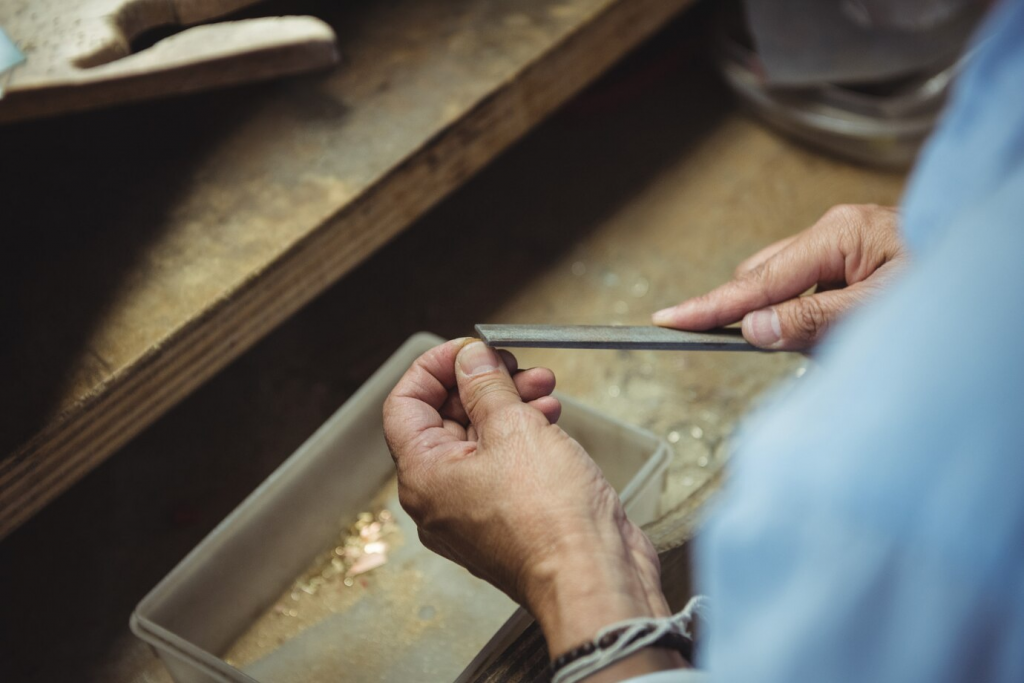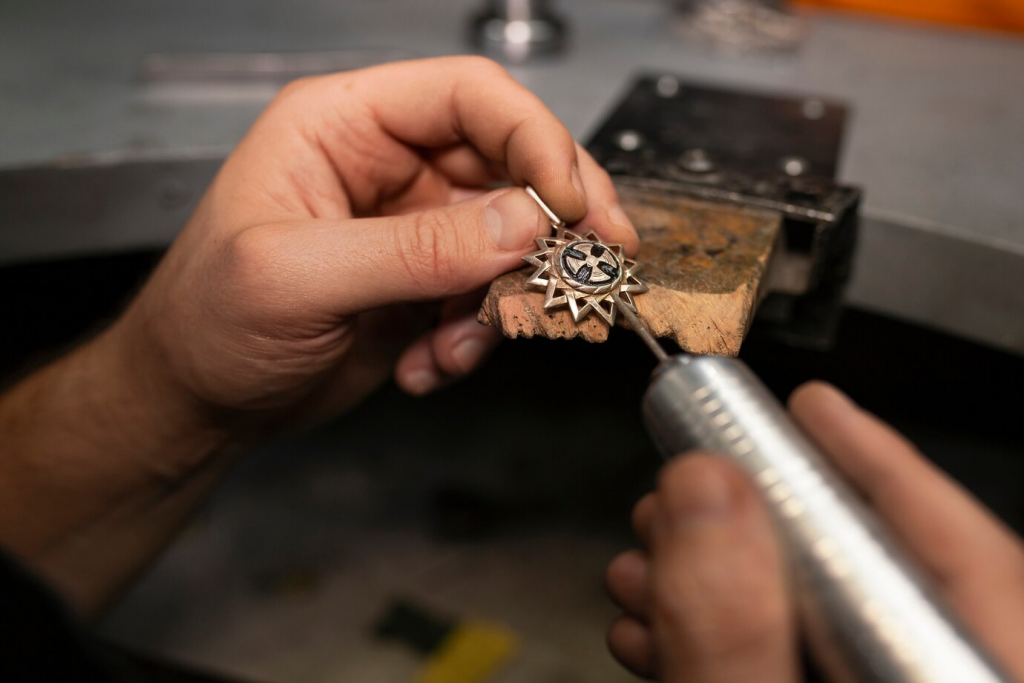Gold plating is a popular method for giving jewelry and other items a beautiful, affluent appearance without the high cost of solid gold. However, there might come a time when the shimmer of gold gives way to the desire for the cool sophistication of polished stainless steel, or when the plating simply wears down and doesn’t look as appealing anymore. If you’ve been admiring your gold-plated jewelry or decor and wondering if there’s a way to restore it to its stainless steel beginnings, fear not; removing the thinnest layer of gold to reveal the stainless steel beneath can be done at home with some care and the right approach. This article will guide you through the process of stripping away gold plating from your valued items safely and effectively.
Introduction to Gold Plating Removal
Understanding that gold plating is typically a very thin layer applied to the surface of other metals, including stainless steel, is essential. This allows items to have the aesthetic appeal of gold without the higher cost associated with solid gold pieces. The process of removing thin layers of gold plating should not be taken lightly, as it could also mean the possibility of scratching or otherwise damaging the underlying metal if not done with precision and care.

Preparing for the Removal Process
Safety First: What You’ll Need
Before you embark on the journey of removing gold plating, it’s crucial to ensure you will not be putting your health or the item at risk. Safety is paramount. You will need protective gear like gloves, goggles, and possibly a face mask, especially if you’re using chemical solutions. Make sure to also have proper ventilation in your workspace.
Setting Up Your Workspace
Choosing a clean, clutter-free work area is vital. Cover your workspace with plastic sheeting or old newspapers to protect the surface from any spills or scratches. Secure good lighting so that you can see exactly what you’re doing, and keep all the necessary tools within reach.
The Removal Methods
Chemical Removal Technique
Necessary Chemicals & Supplies
The chemical solutions required will depend on the kind of gold plating removal method you choose. You could use a commercial gold plating removal solution or a DIY mixture, like a mild acid solution which might contain white vinegar and salt. Ensure that these are suitable for use with stainless steel and will not cause unwanted reactions.
Steps for Chemical Removal
| Step | Description |
|---|---|
| 1. | Prepare your chemical solution as per the directions provided or your DIY recipe. |
| 2. | Apply the solution to the gold-plated area, using a cloth to dab it gently or a soft-bristled brush for more stubborn plating. |
| 3. | Allow the solution to react with the gold plating. This might not take too long, but requires monitoring to prevent overexposure. |
| 4. | Once the gold starts to dissolve or peel away, use a buffer or cloth to gently remove the residue. |
| 5. | Rinse the item with clean water to remove any chemical residue. |
| 6. | Dry the item completely with a soft cloth or let it air dry. |
Mechanical Removal Technique
Tools Required for Mechanical Method
For mechanical removal, you will need tools such as a scraper, lightly abrasive pads, or a polishing tool with a gentle buffing attachment. It should be kept in mind that using abrasive materials could damage stainless steel if not used properly.
Step-by-Step Mechanical Removal
- Begin with the gentlest tool, like a soft cloth dampened with a mild detergent, and rub the gold-plated area lightly.
- If the plating does not budge, escalate to a lightly abrasive pad and use a small, circular motion to wear down the gold layer.
(The article will continue with further expansion on mechanical and chemical methods, post-treatment care, and when to seek professional assistance.)

Aftercare and Maintenance
Cleaning and Polishing Post Removal
Once you have successfully removed the gold plating, you will need to clean the stainless steel to restore its luster. A solution of warm water and mild detergent should suffice for cleaning. After cleaning, drying the piece thoroughly is imperative to avoid water spots. For polishing, use a microfiber cloth and a stainless steel polish to give it a shiny, new appearance.
Tips for Maintaining Stainless Steel
Regular maintenance will keep your stainless steel looking great for years to come. It’s advised to clean stainless steel regularly with the right cleaners to prevent tarnishing and keep it free from scratches. Be proactive and treat spots and stains immediately, avoiding harsh scrubbing which could damage the surface. Stainless steel can last a very long time if treated with care and consideration.
Professional Help and Alternatives
When to Seek Professional Assistance
If you’re unsure about the removal process or if you’ve tried and the plating is stubbornly clinging on, it might be time to hand over the task to a professional. Jewellers and metalworkers have the expertise and tools to remove gold plating without damaging the base metal. They can also offer advice on the feasibility of removal and the condition of the stainless steel beneath.
Alternatives to DIY Removal
For those who might not be confident enough to attempt removal at home or for items that show resistance to treatment, consider other options. Sometimes, simply having the gold-plated item coated with a clear protective layer could make it suitable for continued use. Alternatively, you might find re-plating the item in a material that better matches your preference a more viable solution.

Conclusion
Removing gold plating from stainless steel can be a fulfilling DIY project, allowing you to breathe new life into old items. Whether you opt for chemical or mechanical methods, or decide to seek professional help, it’s vital to approach the process with caution and patience to avoid damaging the stainless steel beneath. Remember that sometimes the original state of the item may have been altered in the plating process, so the result after removal could vary. With the right care and maintenance, your stainless steel will continue to shine for many years.
FAQs
1. Will removing gold plating from a stainless steel item devalue it?
Removing gold plating could potentially devalue an item if the plating is professionally done or if the item is vintage. However, if the plating is worn or peeling, removing it might actually improve the item’s aesthetic and, depending on the collector or market, could enhance its value.
2. How can I tell if an item is gold-plated or solid gold?
Solid gold items are usually stamped with a hallmark that indicates purity (like 14K, 18K, etc.), whereas gold-plated items will not have such markings or may be marked with “GP” for gold plated. Also, gold-plated items are generally lighter in weight compared to solid gold.
3. Can the chemical removal process be harmful to my health?
Yes, using chemicals can be hazardous without the proper safety precautions. Always use gloves, goggles, work in a well-ventilated area, and follow the chemical manufacturers’ instructions to mitigate any risk.
4. Can I replated a stainless steel item after removing the gold plating?
Yes, you can have an item re-plated after removing the gold, but it’s recommended to have this done professionally to ensure the quality and durability of the new plating.
5. What should I do if the stainless steel looks tarnished after removing the gold plating?
If the stainless steel appears tarnished, you can use a stainless steel cleaner and a soft cloth to polish the surface. If tarnish is significant, a professional buffing and polishing service might be required to fully restore the item’s appearance.


